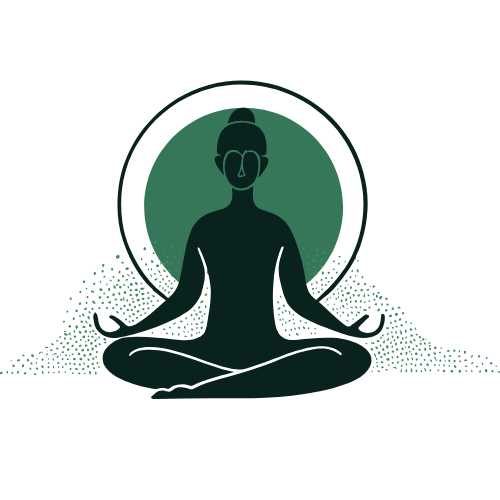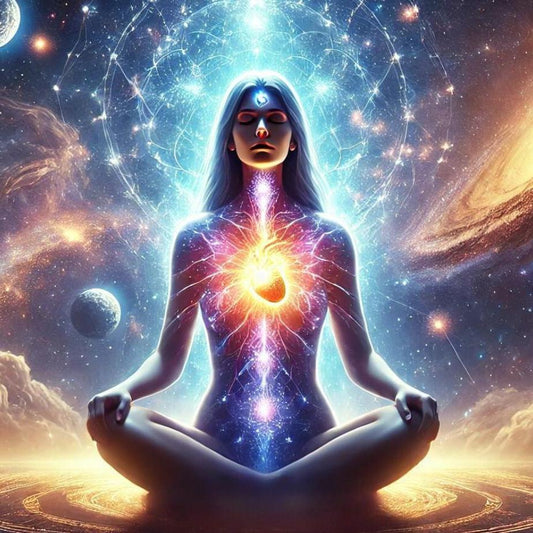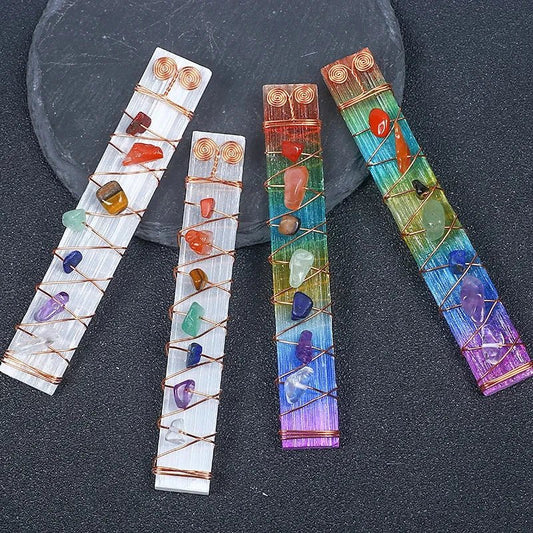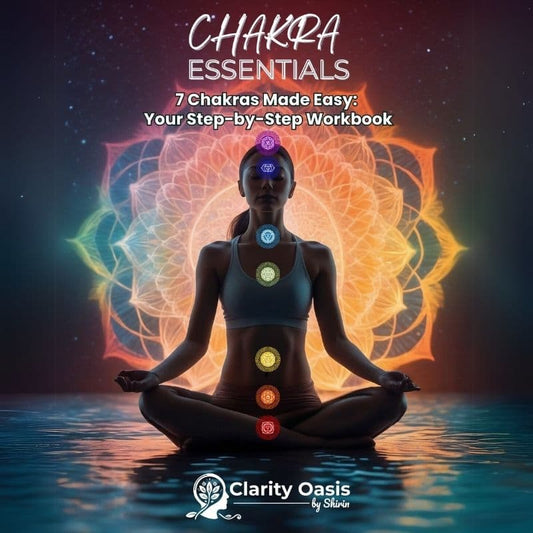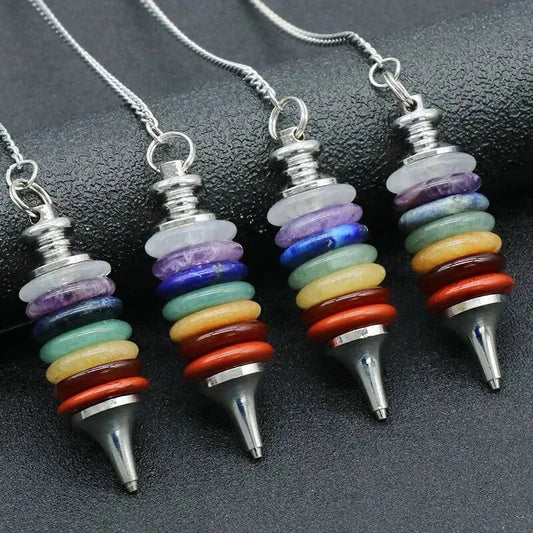
Chakra healing, while transformative, can sometimes leave you feeling unwell as your body and energy system adjust. Symptoms like headaches, fatigue, or flu-like sensations may arise, reflecting the release of old energy and toxins. Emotionally, you might face waves of sadness or anxiety as blockages clear, paving the way for balance. These discomforts, though challenging, often signify progress in your healing journey. Supporting yourself with gentle yoga, mindful breathing, and proper hydration can ease the process. Are you curious about how to navigate these shifts effectively? Let’s explore strategies to optimize your healing and nurture your transformation.
Key Takeaways
- Detoxification during chakra healing can cause physical symptoms like headaches and fatigue as stagnant energy is released.
- Emotional reactions such as sadness or anger may accompany physical discomfort, indicating deeper healing processes.
- Energy blockages lead to symptoms like anxiety and fatigue, signaling the need for healing interventions and attention to specific life areas.
- Effective detox strategies include whole foods, hydration, and regular physical activity to promote energy flow and manage discomfort.
- Seek professional help if experiencing persistent pain, intense emotional distress, or unexplained symptoms during the healing process.
Understanding Chakra Healing
Chakra healing is the process of aligning and harmonizing your energy centers to enhance overall well-being. Each chakra governs specific aspects of your physical, emotional, and spiritual health, making their balance essential for a vibrant and peaceful life.
When your chakras are aligned, you experience vitality, emotional stability, and a more profound sense of connection. Conversely, blocked or misaligned chakras can result in feelings of discomfort, emotional turmoil, or physical imbalances. For example, an imbalanced heart chakra might lead to difficulties in relationships or feelings of isolation.
By engaging in chakra healing practices like meditation, yoga, or energy work, you can restore balance and encourage the free flow of energy throughout your body. These methods not only release blockages but also strengthen your connection to your inner self, promoting emotional resilience and physical harmony.
Embarking on this journey requires attentiveness to your body and emotions. Chakra healing is not merely about addressing issues but fostering holistic self-care and creating a life of balance and fulfillment.
Common Side Effects Of Chakra Healing
Chakra healing often initiates powerful shifts in your energy system, and along with its benefits, you may encounter certain physical and emotional side effects. These responses are a natural part of the healing process, signaling the release of blockages and the realignment of energy pathways. Understanding these effects can help you navigate the experience with greater awareness and self-compassion.
1. Physical Symptoms Overview
Engaging in chakra healing practices can sometimes trigger physical symptoms as your body adjusts to energetic changes. Common experiences include:
- Headaches: Often linked to shifts in the crown or third-eye chakras.
- Fatigue: A sign that your body is processing deep energetic shifts and cleansing old patterns.
- Flu-like Symptoms: Such as mild aches or congestion, indicating a detoxification process.
These physical reactions reflect the interconnectedness of the mind, body, and energy system. As energy blockages are released, your body may temporarily feel unbalanced while it adjusts to the new flow.
How to Manage:
- Stay hydrated to support your body’s detoxification.
- Rest to give your system time to integrate the changes.
- Practice grounding exercises, such as walking barefoot on the earth, to stabilize your energy.
2. Emotional Reactions Explained
Emotional upheavals are a common side effect of chakra healing, as the process often brings suppressed feelings to the surface. You might experience:
- Sudden Mood Swings: Oscillating between sadness, anger, or joy as buried emotions are released.
- Feelings of Vulnerability: A heightened sensitivity as stagnant energies are cleared.
- Moments of Euphoria: A sense of lightness and clarity as you align with a more balanced state.
These emotional responses are your body’s way of processing and letting go of unresolved issues tied to specific chakras. For example, a blocked throat chakra may manifest as tears during healing, symbolizing the release of suppressed communication.
How to Manage:
- Journaling can help you process and understand your emotions.
- Mindfulness or meditation can provide a sense of calm during intense moments.
- Allow yourself to feel without judgment, recognizing that these emotions are part of your healing journey.
Final Thoughts
Both physical and emotional side effects of chakra healing signify transformation and growth. While they may feel challenging, these responses are signs of progress as your energy system realigns. Embrace the process with patience and self-care, knowing that these temporary side effects will lead to deeper balance, clarity, and well-being.
Emotional Release and Healing
Emotional release is a transformative part of the healing process, especially when engaging in chakra work. As energy blockages dissolve, emotions tied to past experiences, unresolved traumas, or unexpressed feelings often rise to the surface. This can manifest as a wide range of emotions—joy, sadness, anger, or relief—each playing a crucial role in your journey of self-discovery and healing.
1. The Role of Emotional Release
Emotional release is your body’s way of letting go of old patterns and wounds that no longer serve you. It clears stagnant energy, fostering emotional balance and greater clarity. This process may bring:
- Spontaneous Tears: A natural response to unburdening suppressed emotions.
- Moments of Introspection: Insights into deeply held beliefs or memories.
- Waves of Vulnerability: As layers of emotional armor are gently peeled away.
Though these experiences can feel intense, they are a vital part of achieving emotional freedom and healing.
2. How to Navigate Emotional Release
- Create a Safe Space: Allow yourself the freedom to express your emotions without judgment.
- Engage in Supportive Practices: Journaling, meditation, or breathwork can help you process and release emotions.
- Seek Support: Talking to a trusted friend, therapist, or healer can provide comfort and perspective.
3. Honoring Your Needs
Every emotional release is a step toward a more authentic and lighter version of yourself. Listen to your body and respond with care:
- Take rest if needed.
- Move gently with yoga or stretching to support energy flow.
- Pause and reflect without rushing through the experience.
Emotional release is not a sign of weakness but an empowering step in your healing journey. Embrace the process with patience and self-compassion, trusting that each wave of emotion brings you closer to inner harmony and wholeness. By honoring your feelings and the lessons they bring, you can create space for joy, peace, and authenticity in your life.
Physical Symptoms Explained
As you embark on your chakra healing journey, you may encounter physical symptoms that reflect shifts in your body’s energy flow. These sensations often arise due to the release of stagnant energies or blockages within specific chakras, signalling the start of a deeper transformation.
1. Common Physical Symptoms
Chakra imbalances or the process of realignment can lead to:
- Fatigue or Lethargy: A sign that your body is adjusting to energy shifts.
- Headaches or Dizziness: Often linked to the activation of higher chakras, such as the third eye or crown chakra.
- Digestive Discomfort: Associated with the healing of the solar plexus chakra, where personal power and emotions are processed.
These symptoms are natural responses as your energy pathways open up and realign.
2. The Role of Healing Practices
Incorporating holistic approaches can ease physical discomfort and support energy flow:
- Yoga and Meditation: Enhance the connection between mind and body, promoting chakra balance.
- Breathwork: Helps release tension and facilitates the movement of energy through the chakras.
- Acupuncture or Crystal Therapy: Targets specific energy centers, aiding in their restoration.
These practices foster a harmonious balance between your physical, emotional, and spiritual aspects.
3. Listening to Your Body
Pay attention to your body’s signals and trust your intuition. Symptoms like fatigue or aches often indicate the release of old, stagnant energies. Acknowledging these sensations with curiosity rather than fear can empower your healing process.
- Stay hydrated and well-rested to support your body through these changes.
- Practice grounding techniques, such as walking in nature or visualization, to anchor yourself during intense shifts.
Physical symptoms during chakra healing are temporary but significant. They mark the release of old patterns and the integration of new energy. Approach this process with patience and self-compassion, knowing that these sensations are stepping stones to restored balance and vitality. Embrace the journey as your body recalibrates, creating space for renewed energy and holistic well-being.
Energy Blockages and Their Impact
Energy blockages within your chakras can disrupt the natural flow of energy throughout your body, manifesting as physical discomfort, emotional instability, or mental exhaustion. These blockages often signal underlying issues that need attention, offering an opportunity for healing and restoration.
1. Signs of Energy Blockages
Blocked energy can result in:
- Physical Symptoms: Headaches, fatigue, or digestive issues often stem from specific chakra imbalances.
- Emotional Struggles: Anxiety, mood swings, or feelings of being stuck may indicate stagnant energy.
- Mental Fatigue: Difficulty focusing or a lack of motivation can point to blockages affecting mental clarity.
These signs act as your body's way of communicating the need for realignment and healing.
2. The Ripple Effect of Blockages
Each chakra governs specific aspects of your life:
- The Heart Chakra impacts relationships and emotional well-being.
- The Root Chakra connects to stability and security, including finances and basic needs.
- The Solar Plexus Chakra governs confidence and personal power.
When one chakra is blocked, its imbalance often cascades, affecting other areas of your body and life. For example, stress in your professional life might lead to digestive discomfort (solar plexus) and emotional strain (heart chakra).
3. Empowering Your Healing Journey
Recognizing the impact of blockages is the first step toward restoring balance. Practices like mindfulness, yoga, and energy work can help clear these blockages, allowing energy to flow freely. Focus on addressing both the physical symptoms and the underlying emotional or spiritual causes.
By tuning into these signals and committing to your healing, you can transform discomfort into an opportunity for growth and deeper self-awareness. Embrace this journey with patience, knowing that each step brings you closer to alignment and vitality.
The Role of Detoxification
Detoxification is a vital component of healing, especially when dealing with energy blockages that disrupt your physical, emotional, and spiritual well-being. By clearing out toxins and stagnant energy, you create space for renewed vitality and balance.
1. Understanding Energy Blockages
Energy blockages occur when the flow within your chakras is disrupted, leading to misalignment. Symptoms of blockages include:
- Physical Discomfort: Fatigue, headaches, or digestive issues.
-
Emotional Strain: Anxiety, irritability, or emotional heaviness.
These blockages hinder both spiritual growth and overall health.
Detoxification addresses these imbalances by promoting clarity and alignment, not just physically but also emotionally and spiritually. Letting go of negative thoughts and unresolved traumas clears the path for energy to flow freely, fostering renewed vitality.
2. Physical Symptoms During Detoxification
As you begin detoxing, physical symptoms may intensify temporarily, signaling your body’s efforts to release toxins and stagnant energy. Common experiences include:
- Headaches or fatigue as your body adjusts.
- Digestive Upset, such as bloating or discomfort, as energy blockages clear.
While these symptoms can feel overwhelming, they are part of the healing process and indicate progress toward chakra balance and overall well-being.
3. Effective Detox Strategies
To support detoxification, focus on holistic practices that nurture both body and spirit:
- Detox Diets: Emphasize whole foods, such as fruits, vegetables, and lean proteins. They also include herbs with cleansing properties.
- Hydration: Drink plenty of water and herbal teas to flush out toxins.
- Physical Activity: Engage in gentle exercise like yoga to stimulate circulation and promote energy flow.
- Mindfulness Practices: Use meditation, breathwork, or journaling to release emotional blockages and cultivate balance.
- Self-Care: Prioritize rest, relaxation, and quality sleep to support recovery.
- Supplement Support: Incorporate vitamins and minerals to enhance your body’s natural detox processes.
4. The Path Forward
Detoxification isn’t just about physical cleansing; it’s a transformative journey that integrates emotional and spiritual healing. By embracing these strategies and listening to your body, you can release blockages, restore energy flow, and move toward a state of harmony and vitality.
Managing Discomfort During Healing
Discomfort during chakra healing is natural and often signals the release of old energy patterns. Embracing this process with self-compassion and intentional practices can help ease the challenges.
1. Breathing Exercises
Engage in deep, intentional breathing to calm your mind and release tension. Techniques like diaphragmatic breathing can help center your energy and foster relaxation.
2. Mindfulness Practices
Stay present by acknowledging your emotions without judgment. Mindfulness can reduce anxiety and help you better process the discomfort that arises during healing.
3. Gentle Movement
Incorporate light stretching or yoga to release stagnant energy and promote physical relaxation. Movements that focus on flexibility and flow can support energy realignment.
4. Herbal Remedies
Use calming herbal teas or supplements, such as chamomile, lavender, or ashwagandha, to soothe your nervous system and support your journey.
5. Self-Care Routines
- Stay hydrated to flush out toxins and maintain energy flow.
- Explore journaling techniques to process emotions and clarify your thoughts.
- Try visualization exercises to guide your focus toward inner peace and balance.
Importance of Grounding Techniques
Grounding techniques are essential for stabilizing your energy during chakra healing, especially when discomfort feels overwhelming.
1. Deep Connection with the Present Moment
Practices like walking barefoot on natural surfaces, focusing on physical sensations, or breathing deeply help anchor your energy. Grounding fosters a sense of safety and calm during moments of imbalance.
2. Energy Stabilization
Grounding helps align your chakras by encouraging the natural flow of energy, reducing sensations of disorientation, and creating a firm foundation for your healing process.
3. Daily Grounding Practices
Incorporating grounding into your routine prevents the buildup of negative energy. Activities like spending time in nature, visualizing roots connecting you to the Earth, or practicing gratitude enhance resilience and emotional stability.
4. Integration of Healing
Grounding techniques ensure that your healing process feels smoother by helping your body and mind integrate energy shifts. This balance between inner awareness and external connection allows for a holistic sense of well-being.
By embracing grounding techniques and self-care strategies, you can navigate discomfort with greater ease and emerge from your chakra healing journey feeling more aligned and empowered.
When to Seek Professional Help
While chakra healing can be a deeply transformative and empowering process, it's important to recognize when you may need extra guidance or support. Intense emotional or physical reactions can sometimes indicate that professional help is needed to assist with the healing process.
1. Persistent Pain
If you experience pain or discomfort that lingers despite your efforts to heal, it may signal that an underlying health issue requires attention. Chronic physical symptoms should be evaluated by a healthcare professional to ensure there are no medical concerns affecting your well-being.
2. Emotional Distress
Healing can stir up intense emotions, but if you find yourself overwhelmed with anxiety, depression, or an inability to cope, seeking help from a therapist or counselor can provide valuable support. Professionals can offer tools to navigate emotional turbulence and promote emotional well-being.
3. Physical Symptoms
Unexplained symptoms, such as chronic fatigue, frequent headaches, or digestive issues, might suggest an imbalance that extends beyond the energetic realm. A healthcare provider can assess whether there is an underlying physical condition that needs to be addressed.
4. Feeling Stuck
If you feel like your healing journey has plateaued or you’re unable to move forward, it might be helpful to work with a professional. Whether it’s a healer, therapist, or spiritual guide, these experts can provide new perspectives and techniques to support your continued progress.
Your body and emotions are powerful indicators of your healing state. By tuning in and recognizing when you need support, you can avoid unnecessary distress and continue your journey toward balance and well-being.
Frequently Asked Questions
Can Chakra Healing Worsen Existing Health Conditions Temporarily?
Yes, chakra healing can sometimes cause temporary discomfort as emotions surface during the process. This emotional release might exacerbate existing health conditions briefly, but it often leads to greater healing and clarity over time.
How Often Should I Practice Chakra Healing for Best Results?
Finding your rhythm in chakra meditation frequency is key. Aim for regular sessions—daily if possible—to balance chakras consistently. Listen to your body; it'll guide you on what feels right and nurturing for your spirit.
Are Certain Chakras More Likely to Cause Side Effects Than Others?
Certain chakras, like the root chakra and solar plexus, may cause more noticeable side effects due to their grounding and emotional roles. Meanwhile, the throat, heart, third eye, and crown chakras can also trigger unique sensations.
What Are the Side Effects of Chakra Opening During Meditation?
Chakra opening can lead to various physical and emotional sensations within the body, such as discomfort or energy shifts, as the major chakras awaken, including the sacral and eye chakra.
How Can Energy Healing and Chakra Sessions Affect Your Physical Body?
Energy healing through chakra sessions can trigger healing processes, sometimes making you feel sick or experiencing intense energy shifts, but a skilled yoga teacher or chakra healer can guide you through the process.


